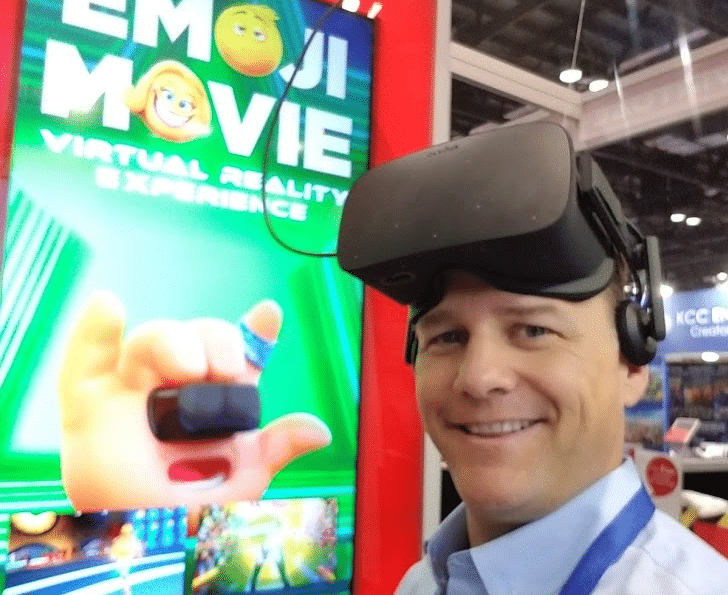Products & Services
From the industry's best ticketing system to unified food & beverage and retail operations, Gateway offers world-class solutions to increase revenue.
Contributions from Randy Josselyn, Dave Langran, Matthew Hoenstine, Ella Baskerville and Tom Uretsky
As we move into the new year, it’s interesting to look into our crystal balls and interpret the business areas, thought processes and technology we think will flourish in the coming year. Last year we analyzed the trends to come for 2018 in articles you can find here, here and here. And now we’ve lined up ten more trends that our industry experts have identified that could help drive your business in 2019.
It might feel strange that embracing new trends is a top trend for 2019. But it’s clear this is the year to stop saying “Because That’s The Way We’ve Always Done It”.
Upon entering the National Comedy Center, guests receive an RFID bracelet they can scan and tell a kiosk what makes them laugh. Then their entire visitor experience is personalized towards their sense of humor. Creating a more bespoke experience for your guests is a great way to introduce new ideas to your venue. Or what about making improvements to your venue in the realm of accessibility? Morgan’s Wonderland in Texas, the first ultra-accessible park in the world, has revolutionized how parks cater to special needs individuals. In fact, 3 out of 4 visitors to the park are not special needs, proving that these considerations are ultra-important for the present. And last year, entertainment as attraction and immersive theater took main stage with the opening of Evermore Park in Utah. Guests interact with period actors and are spellbound into a story full of challenges and intrigue helping to redefine what constitutes an ‘attraction’.
2019 will be a big year for discovering new ways of delivering traditional experiences.
Attractions have always had day-to-day management information to show operational and financial performance, but it’s always been historical and it’s always been challenging to use it to influence the future. With the rise of the big data environment, attractions can utilize increasingly available and cost-effective tools such as IBM Cognos, Microsoft’s Power BI, QlikView and Tableau, to overlay and integrate previously unconnected data sources and customer touch points. Departments can look at how external influences such as weather, traffic, and news events impact their operation. They can further analyze their core customer information and see in detail who they are engaging with and what individual customer segments are looking for them to deliver.
The benefits of such approaches are starting to come through in the attractions industry both in terms of measurable outcomes (for example: increased number of visitors) and intangible benefits such as higher customer and staff satisfaction levels. It is expected that 2019 will see the early adopters of big data develop their implementations further and deepen the data that they include in their models.

Virtual reality is a permanent mainstay in the industry, but not just for the giant theme parks anymore. Increasingly water parks, zoos, aquariums, museums and FECs are turning to virtual reality to build in-venue experiences and improve branding.
At the Woodland Park Zoo in Seattle, they have partnered with Oculus to create a 360-degree video showcasing a day in the life of their rhinos in an effort to shed more light on animal welfare and behavior. Whitewater has partnered with VR Coaster to develop a futuristic virtual reality waterslide. VRsenal now offers fully automated VR booths where the headset starts the game thus eliminating the need for additional staffing at FECs. And Ballast Technologies has developed the world’s first VR Snorkeling and Scuba diving marketed towards water parks, aquariums, hotels and resorts.
These are just examples proving that virtual reality is real and here to stay, and implementing it at your venue creates another experience that can drive attendance, revenue and guest satisfaction.
Last year, we saw an increase in the number and profile of intellectual property partnerships like the one announced between Kennywood and the Pittsburgh Steelers to create Steelers Country, a fan-centric Steelers themed area of their park. But IP partnerships don’t have to be on such a grand scale to be successful, since the strategy and sentiment remains the same. By working with a well-known and socially responsible local brand you gain credibility by association, the opportunity to distribute newsworthy stories, potential access to new markets and often a new ‘theme’ that provides the framework for new events, marketing and experiences.
When we partner with expert brands in another field, we can both tackle bigger projects than we could on our own.
A new resource for safety and security preparedness hit the industry this year, and will be particularly valuable moving forward for smaller, lower profile attractions that don’t have the security funding or manpower of the larger ones. IAAPA started a security committee made up of industry security professionals from large venues to small parks and FECs and it developed the IAAPA Security Advisory Program (ISAP). The program is an email alert that provides relevant and timely global security information that might impact your business, often before the news media even covers it. The committee is also working on a security network where you can contact real security professionals to ask questions and get advice. Find out more about ISAP right here.
We had so much to write about this coming year that we needed two posts! Checkout the last five trends for 2019 right here.